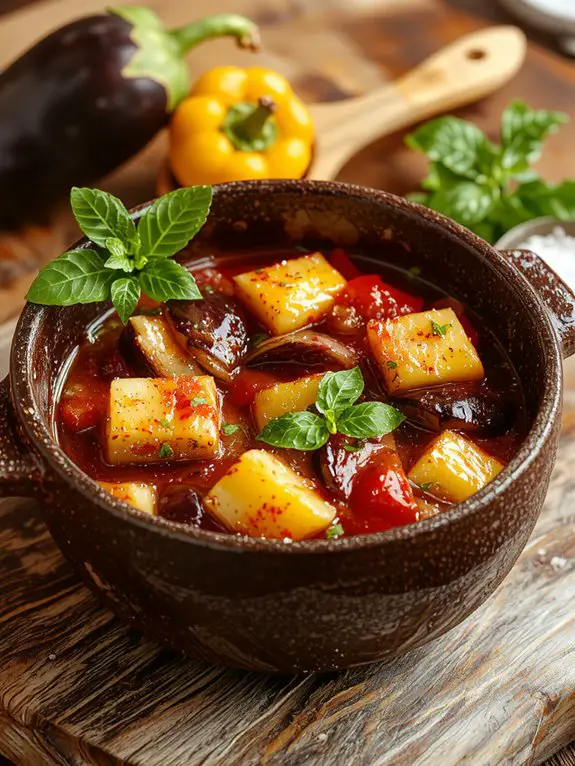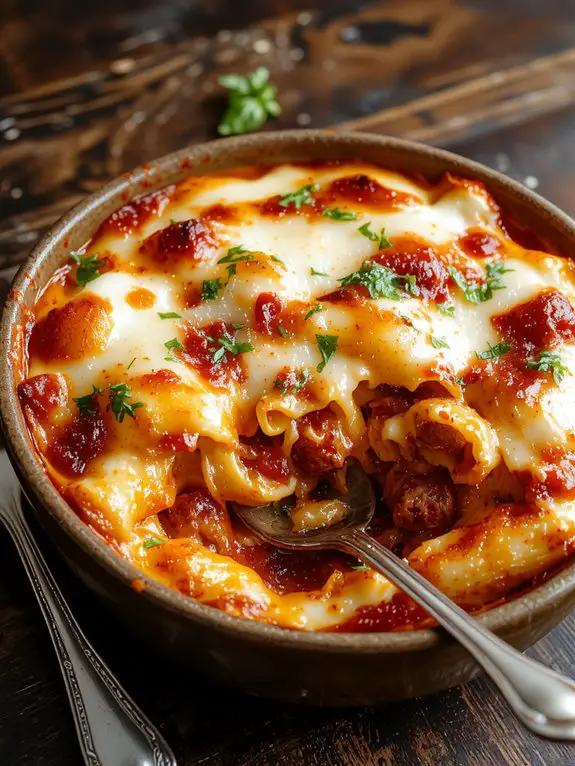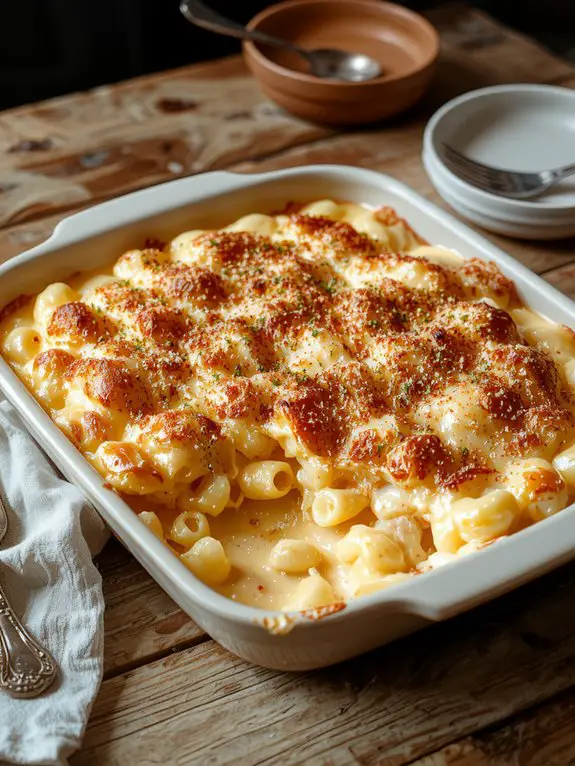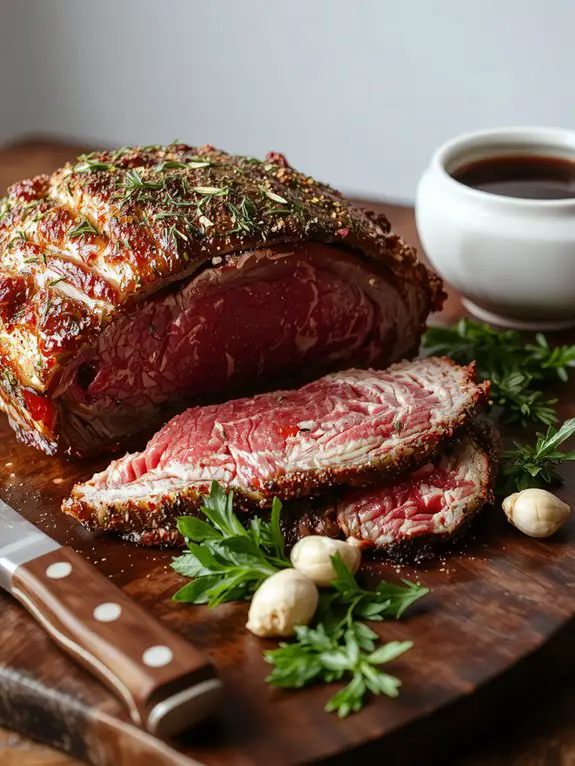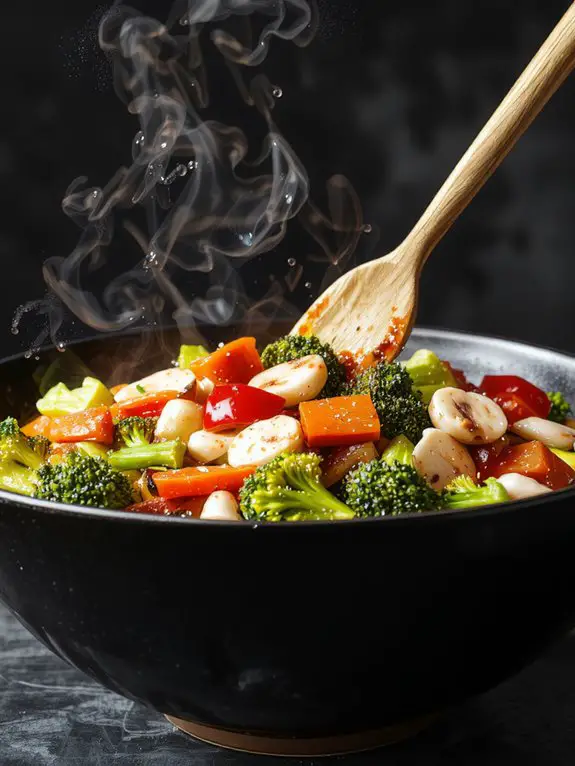I’ve been making ratatouille for years, and there’s something magical about watching humble summer vegetables transform into this deeply flavorful French classic. The secret isn’t just in the ingredients—it’s in understanding how each vegetable releases its essence at different stages of cooking. Most people rush the process, but I’ll show you the technique that creates layers of flavor you never knew were possible.
Recipe
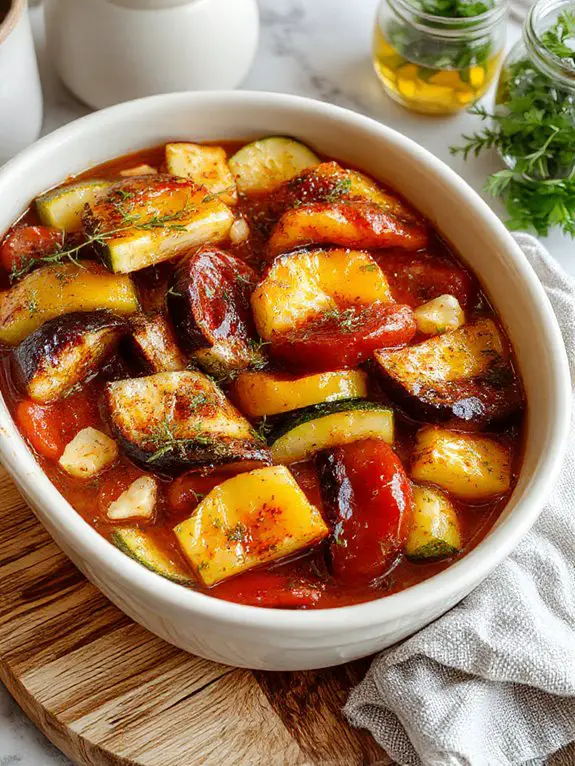
I’m going to make a bold statement here: this ratatouille recipe will completely change how you think about vegetable dishes, and I can guarantee you’ll find yourself craving it long after the last bite. After making this countless times for family dinners and potluck gatherings, I’ve watched even the most devoted meat-lovers go back for seconds and thirds of this gorgeous medley of summer vegetables.
What makes this version so incredibly special is the way each vegetable is treated with individual care—the eggplant gets perfectly silky, the zucchini holds just the right amount of bite, and the tomatoes practically melt into a sweet, jammy base that ties everything together beautifully.
I learned this technique from my French neighbor who insisted that real ratatouille isn’t just thrown together in a pot, but rather built layer by layer with patience and respect for each ingredient. The result is absolutely magical: tender vegetables swimming in a rich, herb-infused sauce that tastes like pure summer sunshine, with depths of flavor that develop and intensify as it simmers.
The aroma alone will have your kitchen smelling like a cozy bistro in Provence, and trust me when I say this dish tastes even better the next day when all those incredible flavors have had time to meld together. Don’t let anyone convince you that ratatouille is complicated—it’s actually quite forgiving and absolutely worth every minute of the gentle cooking process.
Ingredients
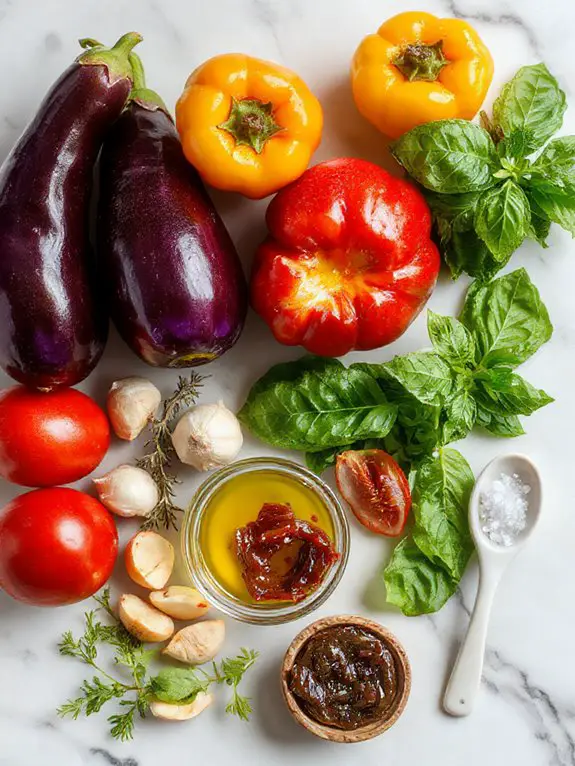
The secret to authentic ratatouille lies in choosing vegetables at their peak ripeness—this isn’t just a vegetable dump, it’s a celebration of summer’s finest produce.
Each ingredient plays a pivotal role in creating layers of flavor that transform simple vegetables into something magical.
Don’t settle for sad, out-of-season vegetables; wait for the good stuff or your ratatouille will taste flat and watery.
Fresh Vegetables:
- 2 medium eggplants – Look for firm, glossy skin with no soft spots. The smaller Japanese eggplants work beautifully too and have fewer seeds
- 3-4 medium zucchini – Choose smaller ones; they’re less watery and hold their shape better during cooking
- 4 large tomatoes – Ripe but still firm. Roma or San Marzano varieties are ideal, but any good tomato works
- 2 bell peppers (red, yellow, or orange) – Skip the green ones; they’re too bitter and sharp for this dish
- 1 large yellow onion – Sweet onions like Vidalia make the base even more mellow and delicious
Aromatics & Herbs:
- 6 garlic cloves – Fresh is non-negotiable here; pre-minced just won’t give you that punch
- Fresh thyme sprigs – Dried works in a pinch, but fresh thyme’s earthiness is worth seeking out
- Fresh basil leaves – Save the best leaves for garnish; this herb makes or breaks the final dish
- Bay leaves (2-3 whole) – Don’t skip these; they add depth you can’t get anywhere else
Pantry Essentials:
- Extra virgin olive oil – Use the good stuff; you’ll taste the difference in every bite
- Tomato paste (2 tablespoons) – This concentrates the tomato flavor and prevents a watery sauce
- Sea salt and black pepper – Kosher salt works too, but taste as you go
- Herbes de Provence (optional) – A pinch adds that authentic French countryside flavor
How to Make the Best Traditional French Vegetable Medley
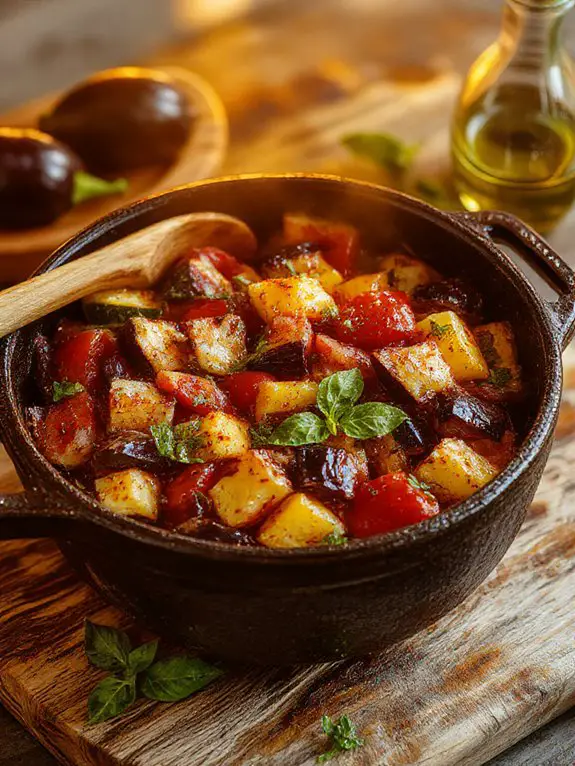
Prepare all vegetables by washing and drying them thoroughly before cutting.
Take your time with the prep work—ratatouille is all about uniform cooking, so consistent sizing is key. Pat vegetables completely dry to prevent excess moisture from making your dish watery. This step sets you up for success and makes the actual cooking flow smoothly.
Cut eggplant, zucchini, and yellow squash into ½-inch cubes, keeping each variety separate.
Uniform pieces guarantee even cooking throughout the dish. Keep vegetables separated because they’ll cook at different rates—eggplant needs more time than zucchini. Salt the eggplant cubes lightly and let them sit in a colander for 15 minutes to draw out bitterness, then pat dry before cooking.
Dice onions and bell peppers into similar-sized pieces, roughly ½-inch.
Consistent sizing with your other vegetables creates a harmonious texture in every bite. The onions will become translucent and sweet, forming the flavor base, while peppers add color and mild sweetness that balances the earthier vegetables.
Mince garlic cloves finely and keep them separate from other aromatics.
Garlic burns quickly, so you’ll add it later in the cooking process. Finely minced garlic distributes more evenly throughout the dish and releases more flavor than larger pieces. Fresh garlic makes a noticeable difference over pre-minced versions.
Heat olive oil in a large, heavy-bottomed pot or Dutch oven over medium heat.
A heavy-bottomed pot prevents hot spots and burning. You’ll need enough space for all vegetables without overcrowding—if your pot seems too small, cook in batches. The oil should shimmer but not smoke when ready.
Sauté onions first until they become translucent and fragrant, about 5 minutes.
Onions need the longest cooking time to develop sweetness. Don’t rush this step—properly cooked onions create the flavor foundation. They should soften and become golden, not brown or crispy.
Add bell peppers to the pot and cook for another 3-4 minutes until slightly softened.
Peppers need moderate cooking to maintain some texture while becoming tender. They’ll add natural sweetness and vibrant color. Stir occasionally to prevent sticking and secure even cooking.
Incorporate minced garlic and cook for just 30 seconds until aromatic.
Watch carefully—garlic can go from fragrant to burnt in seconds. You’ll smell the wonderful aroma when it’s ready. This brief cooking releases the garlic’s flavor without making it bitter.
Add eggplant cubes and cook for 6-8 minutes, stirring occasionally.
Eggplant acts like a sponge, so don’t worry if it seems to absorb all the oil initially—it will release moisture as it cooks. The pieces should start to soften and lose their raw, spongy texture.
Stir in zucchini and yellow squash, cooking for another 5 minutes.
These cook faster than eggplant, so adding them later prevents mushiness. They should be tender but still hold their shape. Gentle stirring prevents breaking apart the softening vegetables.
Add diced tomatoes with their juices, breaking up any large pieces with your spoon.
The tomatoes create the sauce that brings everything together. Their acidity balances the richness and helps marry all the flavors. Fresh tomatoes work well too—just increase cooking time slightly.
Season with salt, black pepper, dried herbs de Provence (or individual herbs), and a bay leaf.
Season gradually and taste as you go—you can always add more. Herbs de Provence typically contains thyme, rosemary, and oregano, perfect for this dish. The bay leaf adds depth but remember to remove it before serving.
Bring the mixture to a gentle simmer, then reduce heat to low.
A vigorous boil will break down vegetables too quickly and create mush. You want gentle bubbling that slowly melds flavors while maintaining texture. This low, slow approach is vital for authentic ratatouille.
Cover partially and simmer for 25-30 minutes, stirring every 10 minutes.
Partial covering allows some moisture to evaporate while preventing over-reduction. Regular stirring prevents sticking and guarantees even cooking. The vegetables should be tender but not falling apart.
Taste and adjust seasoning during the last 10 minutes of cooking.
Flavors concentrate as liquid reduces, so final seasoning adjustments are essential. Add fresh herbs like basil or parsley now for bright flavor. Remove the bay leaf before serving.
Let ratatouille rest for 10 minutes before serving to allow flavors to settle.
This resting period helps flavors meld and the dish to reach the perfect serving temperature. Ratatouille actually tastes even better the next day, as flavors continue developing overnight in the refrigerator.
Chef Tips
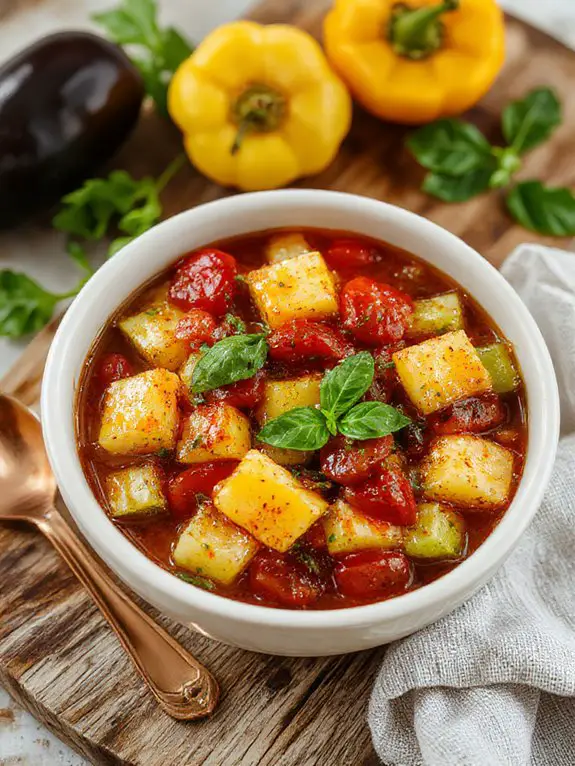
Since mastering ratatouille comes down to timing and technique, I’ll share the professional secrets that transform this rustic dish into restaurant-quality perfection.
Sharp knife skills guarantee uniform cuts for even cooking.
Salt eggplant beforehand to remove bitterness.
Cook vegetables separately, then combine.
Master elegant plating techniques by arranging vegetables in colorful overlapping patterns for stunning presentation.
Nutrition
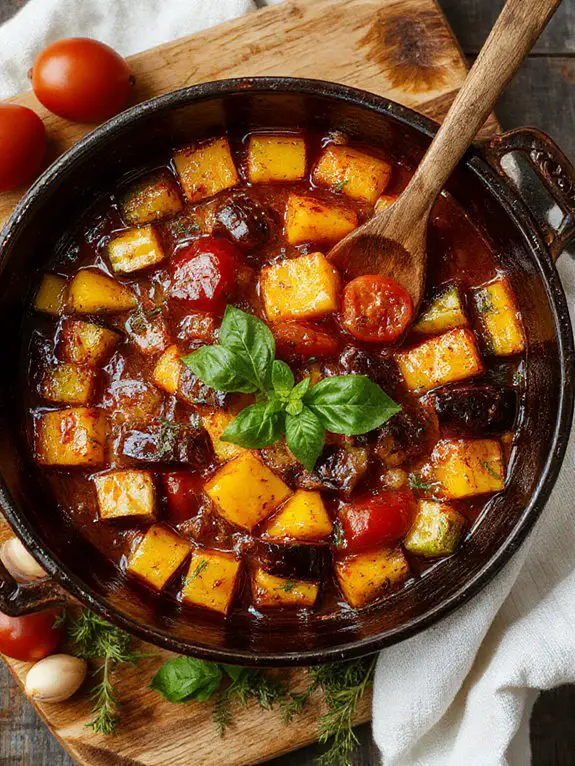
This traditional French vegetable dish is naturally low in calories and packed with nutrients from fresh vegetables. One serving of ratatouille provides a good source of vitamins, minerals, and fiber while being relatively low in fat and calories.
| Nutrient | Amount per Serving (1 cup) |
|---|---|
| Calories | 85 |
| Total Fat | 4.2g |
| Saturated Fat | 0.6g |
| Cholesterol | 0mg |
| Sodium | 295mg |
| Total Carbohydrates | 12g |
| Dietary Fiber | 4.1g |
| Sugars | 7.8g |
| Protein | 2.6g |
| Vitamin C | 18mg (20% DV) |
| Vitamin A | 850 IU (17% DV) |
| Potassium | 485mg |
| Folate | 25mcg |
| Vitamin K | 15mcg |
What You’ll Love About This Recipe
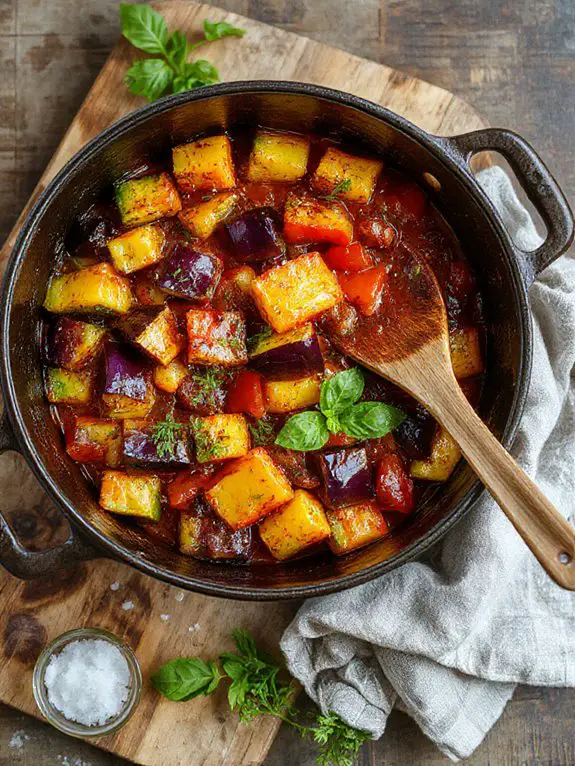
This classic French dish brings together the best of summer vegetables in a way that’s both rustic and elegant, making it perfect for impressing guests or enjoying a cozy family dinner. You’ll find yourself falling in love with how simple ingredients transform into something truly magical when they’re layered with care and patience.
Fresh, vibrant flavors shine through in every bite, as the tomatoes, zucchini, eggplant, and bell peppers meld together while still keeping their individual personalities and textures.
Surprisingly simple technique means you don’t need fancy culinary skills to create this stunning dish. Just a sharp knife for slicing and a little time to arrange the vegetables in beautiful, overlapping circles.
Incredibly versatile serving options let you enjoy ratatouille as a hearty main course with crusty bread. It also works well as an elegant side dish for grilled meats, or even a delicious filling for omelets and pasta the next day.
Recipe Card
This traditional French vegetable stew brings together the rustic flavors of Provence in a comforting, herb-infused dish that celebrates summer produce at its finest. Ratatouille transforms simple garden vegetables into a harmonious medley where each ingredient maintains its distinct character while contributing to the overall depth of flavor.
Ingredients:
- 1 large eggplant, diced into 1-inch cubes
- 2 medium zucchini, sliced into rounds
- 1 large red bell pepper, cut into strips
- 1 large yellow bell pepper, cut into strips
- 1 large onion, sliced
- 4 ripe tomatoes, chopped
- 4 cloves garlic, minced
- 1/4 cup olive oil
- 2 tablespoons fresh thyme leaves
- 2 tablespoons fresh basil, chopped
- 1 tablespoon fresh oregano
- 2 bay leaves
- Salt and black pepper to taste
- 2 tablespoons tomato paste
Instructions:
- Salt the diced eggplant and let sit for 30 minutes to draw out moisture, then pat dry with paper towels.
- Heat 2 tablespoons olive oil in a large, heavy-bottomed pot over medium-high heat.
- Add eggplant and cook for 5-7 minutes until lightly browned. Remove and set aside.
- Add remaining oil to the pot and sauté onions until translucent, about 5 minutes.
- Add garlic and cook for 1 minute until fragrant.
- Add bell peppers and cook for 5 minutes until slightly softened.
- Stir in tomato paste and cook for 1 minute.
- Add chopped tomatoes, thyme, oregano, and bay leaves.
- Return eggplant to the pot and add zucchini.
- Season with salt and pepper, then simmer covered for 20-25 minutes, stirring occasionally.
- Remove lid and cook for additional 10-15 minutes until vegetables are tender and liquid has reduced.
- Remove bay leaves and stir in fresh basil before serving.
Notes:
Ratatouille tastes even better the next day as flavors continue to meld. Can be served hot as a main dish with crusty bread or at room temperature as a side dish.
For a smoother texture, some vegetables can be partially pureed before the final cooking stage.
Equipment:
Large heavy-bottomed pot or Dutch oven, cutting board, sharp knife, wooden spoon
Time:
Prep time: 20 minutes
Cooking time: 45 minutes
Cuisine:
French
Serving:
4-6 servings

